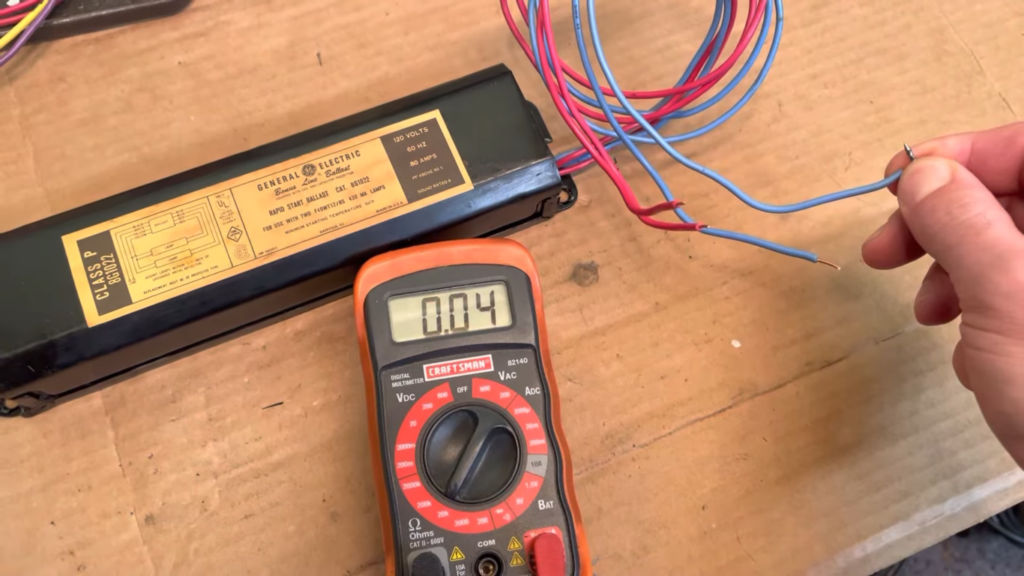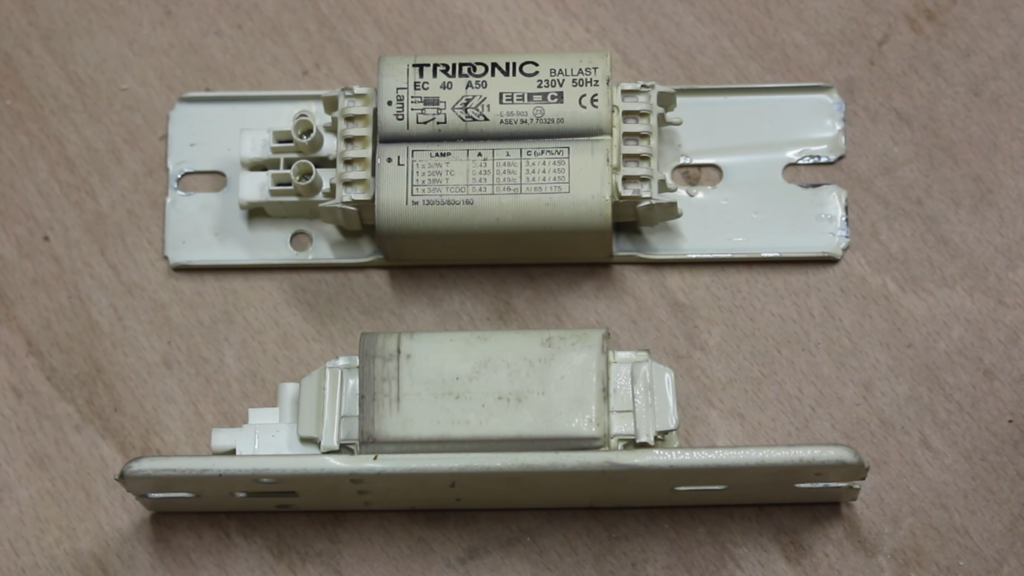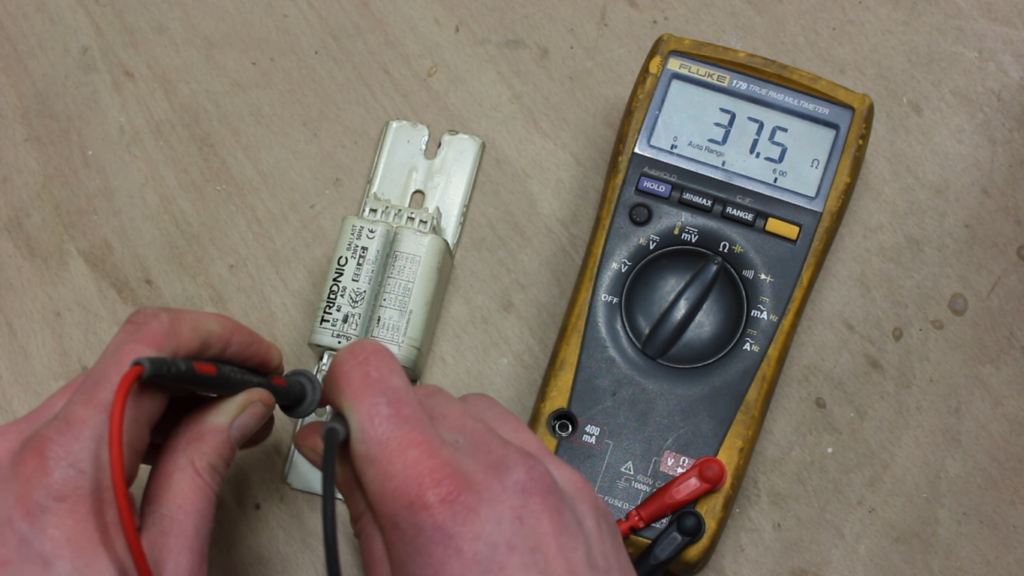If you’re having problems with your fluorescent light fixtures, the ballast may be at fault. Ballasts are essential components of fluorescent lighting systems, and if they’re not working properly, it can cause all sorts of problems. Fortunately, testing a ballast is a pretty straightforward process, and in this article we’ll show you how to do it. So if you’re having issues with your fluorescent lights, don’t panic – just follow these simple steps and you’ll have them up and running in no time!
What is a Ballast?
Without a ballast, an electronic device would not be able to function properly. For example, a fluorescent light bulb would not be able to produce light without a ballast to control the flow of electricity. A car’s headlights would also be useless without a ballast to regulate the current. Ballasts are essential components of many electronic devices.

Ballasts not only control the flow of electricity to protect an electronic device from damage, but they also are responsible for starting the flow of electricity in the first place.
There are two types of ballasts: electronic and magnetic. Electronic ballasts use transistors to control the flow of current, while magnetic ballasts use inductors. Most modern electronic devices use electronic ballasts because they are smaller and more efficient than magnetic ballasts. However, both types of ballasts serve the same purpose: to regulate the flow of electricity in an electronic device.
There are many reasons why a ballast may fail. The most common reason is because the bulb has burned out. If the bulb has burned out, the ballast will need to be replaced. Other reasons for ballast failure include:
- Bulb socket corrosion
- Loose wire connections
- Damaged capacitors
No matter the reason for failure, it’s important to know how to test a ballast with a multimeter and deal with the issue as soon as possible. [1], [2]
How Can You Find a Ballast is Bad?
But how can you tell if a ballast is bad? There are actually a few signs that indicate a ballast needs to be replaced!
Flickering lights
One of the most common signs that a ballast is going bad is flickering lights. If the ballast is not able to properly regulate the current, the light will flicker on and off. This can be annoying and may even cause headaches.
Flickering lights are often caused by faulty connections between the ballast and the light bulb. Over time, these connections can become loose, causing the current to fluctuate. This can damage the ballast and cause it to malfunction.
If you notice your lights are flickering, it’s important to check the connections between the ballast and bulbs. Tighten any loose connections and see if that fixes the problem. If not, then it’s likely that the ballast itself is failing.

Dim lights
Another symptom of a bad ballast is dim lights. If the ballast is not providing enough current to the bulb, the bulb will appear dim. This is because the bulb is not receiving enough electricity to produce a bright light.
If you notice that your lights are dimming, it could be a sign that your ballasts are going bad and need to be replaced.
There are other reasons why lights may appear dim, such as loose wires or dirty bulbs. However, if you have checked these things and the lights are still dim, it is likely due to a bad ballast.
Slow start
Another symptom of a bad ballast is when it takes longer for an electronic device to turn on. For example, if it used to take a fluorescent light bulb a second to turn on, but now it takes several seconds, this could be a sign that the ballast is going bad.
A slowly starting electronic device is one of the first signs that something is wrong with the ballast. If you notice this happening with any of your devices, it’s important to take action right away and replace the ballast.
Weird sounds
If you notice your electronic device making strange noises, it could be a sign that the ballast is going bad. These noises are usually caused by the arcing of electricity as it jumps across the gap between the electrodes in the device. This can cause damage to the electronic components in the device and is a definite sign that the ballast needs to be replaced.
Bulbs look burnt out
Final sign that a ballast is going bad is if the bulbs connected to it start to burn out at the ends. This is because a bad ballast cannot properly regulate the flow of electricity, which can cause too much current to flow through the bulbs and burn them out.
How To Test A Ballast With A Multimeter
Now that we know some of the signs that indicate a ballast is going bad, let’s talk about how to test a ballast with a multimeter. This is actually a pretty simple process, and it only takes a few minutes.
A multimeter is a testing device that measures electrical properties like voltage, current, and resistance. It’s an essential tool for any electrician or electronics enthusiast.

Multimeters can be used to test all sorts of electrical components, including batteries, motors, and switches. They can also be used to test whether a circuit is open or closed.
There are two main types of multimeters: analog and digital. Analog multimeters use a needle to point to a scale that indicates the reading. Digital multimeters display the reading on a digital screen.
Most multimeters can measure AC or DC voltage, current, and resistance. Some higher-end models also include features like capacitance, temperature, and frequency measurement.
Multimeter is an ideal tool for testing whether a ballast is functioning properly. By measuring the voltage and current flowing through the ballast, you can quickly determine if it is working correctly. [3]
Turn the circuit breaker switch off
The first step is to turn the circuit breaker switch off. This will ensure that you don’t accidentally shock yourself while working on the ballast.
Remove the ballast from its housing
The next step is to remove the ballast from its housing. This will give you access to the wires that need to be tested.
To remove the ballast, first remove the lightbulbs from their sockets. Then, unscrew the ballast cover and carefully remove the ballast from its housing.
Keep in mind that the exact process will depend on your ballast model, so be sure to consult your ballast’s manual for specific instructions.
Once the ballast is removed, you should see wires, one of them will always be white. These are the wires that need to be tested. White wire is the ground wire and the other wires are the ones we will test.
Set your multimeter to resistance mode
The next step is to set your multimeter to resistance mode. This is usually indicated by a Ω symbol on the multimeter’s display. Resistance is the measure of how much a material opposes the flow of electric current. The higher the resistance, the more the opposition. Most materials have some resistance, but some are very good conductors with very low resistance like metals. Other materials are very poor conductors with high resistance like rubber or glass.
For this test, you will need to set your multimeter to the highest resistance setting. This will ensure that you don’t accidentally damage your multimeter while testing the ballast. Usually the highest value will be “1k Ohms”.
To set the resistance on your multimeter, consult your multimeter’s manual. Every model is different, so it’s important to consult the manual for specific instructions.
Probe the ballast wires
Next, you will need to probe the ballast wires. Multimeters have two probes, one red and one black.
For this test, you will need to touch the black probe to the white ground wire and the red probe to each of the other wires in turn. As you do this, you should see the resistance reading on your multimeter’s display change.
So first, touch the white, ground wire with the black multimeter probe. Then, touch the red probe to each of the other wires to check them for faults. Be sure to write down the resistance readings for each wire so you can reference them later.

Check the results
Finally, it’s time to check the results of your test. If all wires show the “O.L” or “1” reading, everything is fine and the ballast is working correctly. If any of the wires show a different reading, that means there is a problem with the ballast and it will need to be replaced.
If you’re not sure how to interpret your multimeter’s readings, consult your multimeter’s manual or an electrician. They will be able to help you troubleshoot the problem and determine if your ballast needs to be replaced. [1], [4]
FAQ
How can you tell if a ballast is bad?
The most common symptom of a bad ballast is flickering or non-working lights. If your fluorescent light fixtures are flickering or the bulbs won’t light up, it’s probably because the ballasts need to be replaced. You can test a ballast with a multimeter to see if it’s working properly.
Another symptom of a bad ballast is a humming noise. If you hear a buzzing sound coming from your light fixtures, it’s probably because the ballasts are going bad.
Finally, if your lights light up slower than usual or take a long time to reach full brightness, it could be a sign that the ballasts are going bad.
How do you test Ohm value of a ballast?
To test the Ohm value of a ballast, you will need to use a multimeter. First, set the multimeter to the resistance setting. Then, touch one lead of the multimeter to each of the ballast’s terminals. The resistance reading should be either 1 or O.L. If it is different, then the ballast is most likely defective and needs to be replaced.
What voltage should be coming out of a ballast?
The voltage coming out of a ballast should be the same as the voltage going into it. If you’re testing a 120V ballast, you should see 120V coming out of it.
However, if you’re seeing a significantly lower voltage than what’s going into the ballast, that’s an indication that the ballast is failing and needs to be replaced.
If you’re not sure what voltage your ballast is supposed to be, consult your owner’s manual or contact the manufacturer.
How do you test a magnetic ballast?
To test a magnetic ballast, you will need a multimeter. You will also need to access the ballast wiring system. Once you have located these, set your multimeter to ohms mode and touch one lead to each wire. If the reading is infinite, then the winding is open and the ballast is bad. If the reading is 0, then the winding is shorted and the ballast is also bad. A good magnetic ballast should have a reading of 1 or O.L.
Useful Video: How to test a Fluorescent Ballast
Conclusion
Ballast testing is essential for any HID lighting system. By testing your ballast regularly, you can ensure that your lights are operating at their optimal level and avoid costly repairs. With a multimeter, testing a ballast is a relatively simple process. First, make sure there’s no power running to the ballast. Second, remove the ballast from the fixture. Third, set the multimeter to measure resistance and touch the probes to the ballast’s wires. Finally, check the reading on the multimeter and check if everything is alright. Thanks for reading and feel free to leave a comment below if you have any questions!
References
- https://electrouniversity.com/how-to-test-a-ballast-with-a-multimeter/
- https://insights.regencylighting.com/what-are-the-different-types-of-ballasts
- https://www.fluke.com/en-us/learn/blog/electrical/what-is-a-digital-multimeter
- https://www.galvinpower.org/how-to-test-an-electronic-ballast-with-a-digital-multimeter/














Leave a Reply